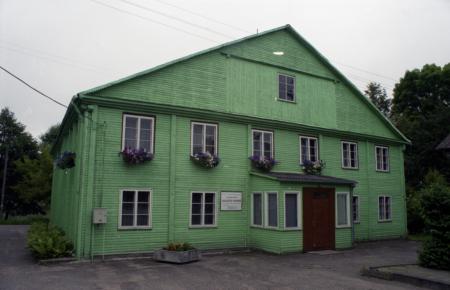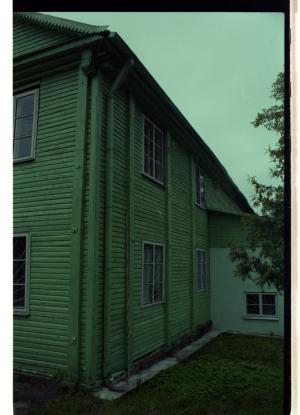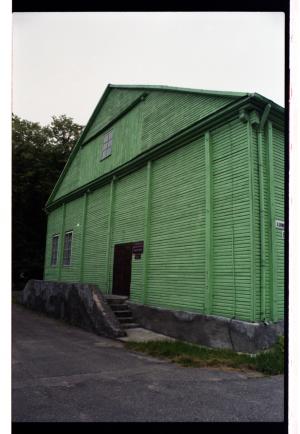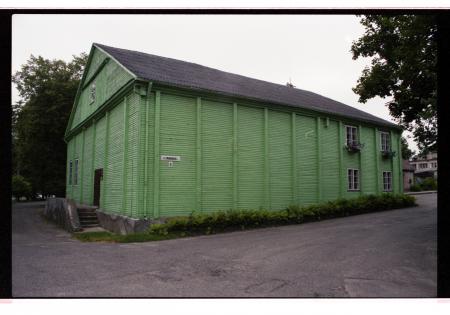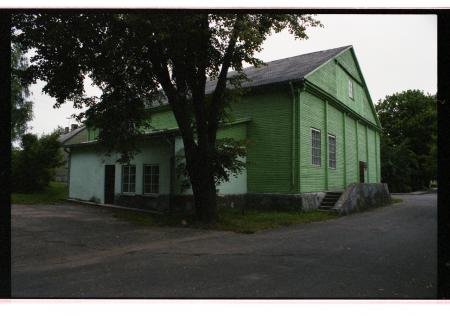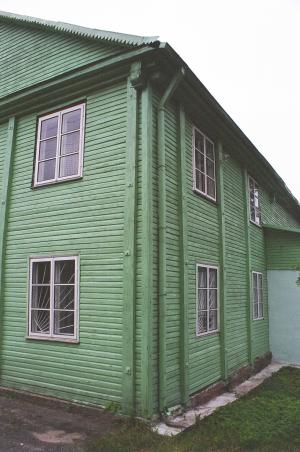Obj. ID: 8987
Jewish Architecture Wooden Beit Midrash in Veisiejai, Lithuania
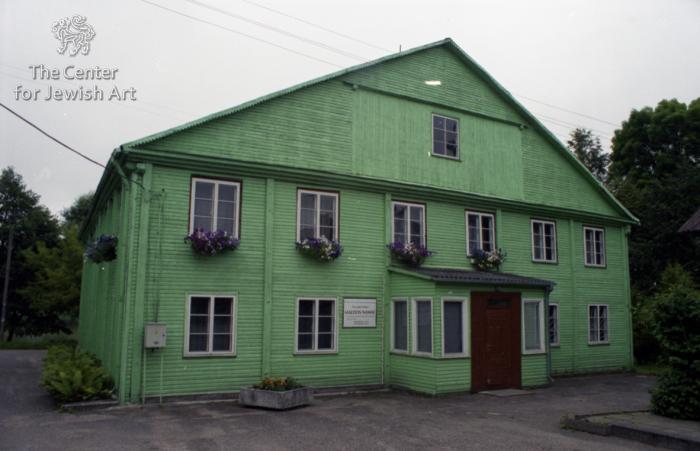
Text from Aliza Cohen-Mushlin, Sergey Kravtsov, Vladimir Levin, Giedrė Mickūnaitė, Jurgita Šiaučiūnaitė-Verbickienė (eds.), Synagogues in Lithuania. A Catalogue, vol. 2 (Vilnius, 2012):
The beit midrash is close to the shore of picturesque Lake Ančia and faces the lake with its eastern façade. The beit midrash is a wooden building, built after a design by technician A. Abramas from 1927 (Fig. 1),8 and has mostly preserved its original shape. The building is a rectangular wooden log structure on a masonry foundation. It is sided with horizontal planks, and painted with green oil paint. Its main mass is placed on an east-west axis, measuring 19.82 m from west to east, 18.10 m from south to north, and 10.67 m high above its foundation. It is topped with a gabled roof of queen-post construction, covered with asbestos sheets, instead of the original tin.
According to the initial design from 1927, the interior space was divided in a prayer hall in the east, and a group of rooms on the ground floor and the first-floor women’s section in the west. The prayer hall was ca. 12 m long and 18 m wide. According to the design, it should be lit by twelve windows: six in its eastern wall and three each in the southern and northern walls. The traces of the original fenestration are concealed by new weatherboarding. The Torah Ark once stood in the middle of the eastern wall, while the bimah occupied the center of the prayer hall. The bimah was a square masonry platform with four wooden posts in its corners. These posts supported the flat ceiling of the prayer hall.
In the western part of the building, two rows of smaller rectangular windows lit three rooms on the ground floor and the women’s section on the first floor. The men’s entrance to the building was situated in the center of the western facade, while a staircase for women was attached to the western portion of the northern façade; today (2004) only a trace of its eastern wall is evident.
After WW II a new entrance was cut into the eastern façade, a staircase was removed from the northern façade, an entrance lobby was added on the western side, and yet another annex to the southern side. Today (2004) the building serves as a Baptist church.
sub-set tree:
Cohen-Mushlin, Aliza, Sergey Kravtsov, Vladimir Levin, Giedrė Mickūnaitė, Jurgita Šiaučiūnaitė-Verbickienė (eds.), Synagogues in Lithuania. A Catalogue, 2 vols. (Vilnius: VIlnius Academy of Art Press, 2010-12)
Valentinas Brandišauskas, "Fate of Jewish Property in Lithuania during World War II," in Alfredas Jomantas (ed.), Jewish Cultural Heritage in Lithuania (Vilnius: Versus aureus, 2006), 20-70, here p. 61..
CJA documentation;
Marija Rupeikienė, Nykstantis kultūros paveldas: Lietuvos sinagogų architektūra (Vilnius, 2003), p. 162;
Pinkas hakehilot: Lita, ed. Dov Levin (Jerusalem, 1996), p. 263;
Rossiiskaia evreiskaia entsiklopediia (Moscow), vol. 4 - 2000, p. 219;
Marija Rupeikienė, "Medinės Lietuvos sinagogos," in Alfredas Jomantas (ed.), Medinė architektūra Lietuvoje (Vilnius, 2002), p. 78;
https://www.bernardinai.lt/daugiakultures-praeities-liudininkes-veisieju-sinagoga/



